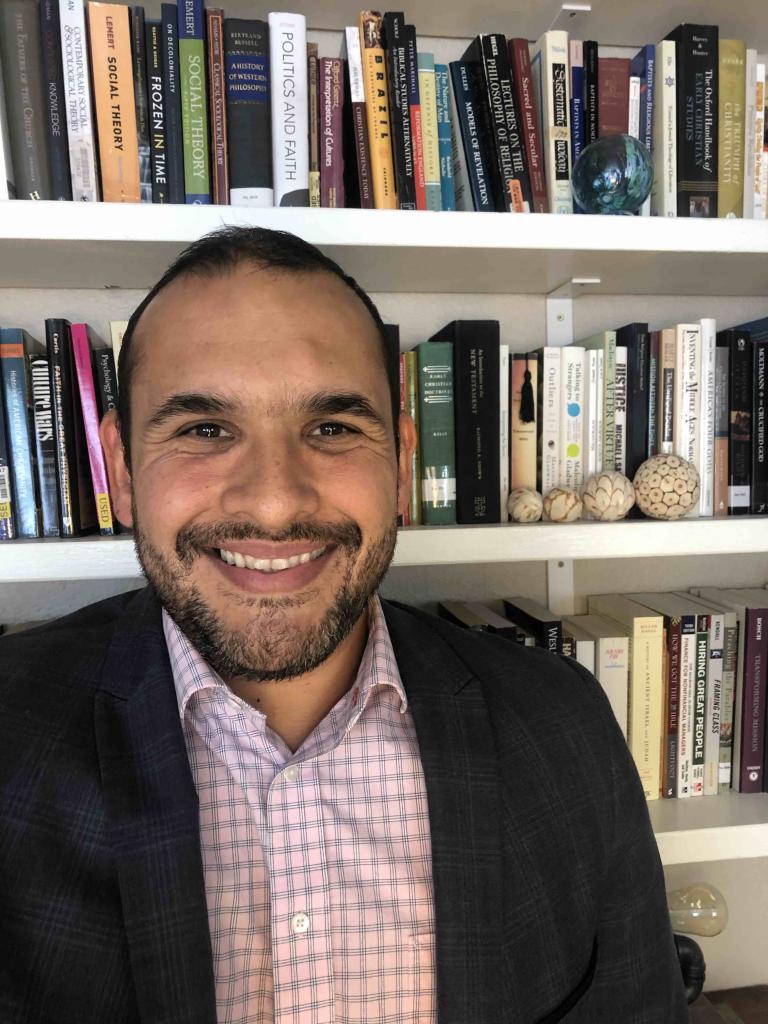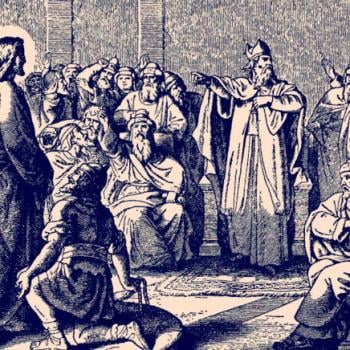A guest post today from a rising scholar whom I admire, namely João Chaves. Here is a short sketch of his background:
João B. Chaves, Ph.D., is Assistant Director for Programming at the Hispanic Theological Initiative, housed at Princeton Theological Seminary. João is the author of several peer-reviewed articles and three books, including Migrational Religion: Context and Creativity in the Latinx Diaspora (Baylor University Press, 2021). His forthcoming books include, The Global Mission of the Jim Crow South (Mercer University Press, May 2022), Baptists and the Kingdom of God (co-edited with Laine Scales, under contract with Baylor University Press), and Remembering Antônia Teixeira: Missions, Memory, and Violence Across Borders (co-authored with Mikeal Parsons, under review). You can follow João on Twitter at @JoaoB_Chaves
Lessons From a Church’s Sidewalk:
Migrant Experiences and White Evangelical Neighbors
A few years ago, while I was conducting research on immigrant faith communities, a pastor of a large immigrant church in the Southern USA told me a story that encapsulates some of the central shifts happening beneath our feet. Walking around the church’s multimillion dollar campus, the pastor pointed to one of the many sidewalks that connect the buildings, parking lots, patios, and a soccer court and told me that when the group he pastors was still small, the pastor of the predominantly white church hosting them at the time demanded that immigrants step off those sidewalks whenever they saw white Americans (Christians!) coming their way. Fast forward a few years, and you get a very different picture: the immigrant group has grown exponentially and bought the campus from the white Americans who had diminished in both numbers and financial power. In a demonstration of grace, the immigrant pastor hired the pastor who had once claimed that immigrants are not good enough to share sidewalks with members of the predominantly white church. He did not need to hire the US-born minister but, he told me, he wanted “his brother” to retire comfortably.
Stories like this continue to proliferate as Global South Christianities grow in a number of different directions. Religious entrepreneurs, migrants, and missionaries work to disseminate their religious products as they travel from the Global South to the Global North, from one part of the Global South to another, and within and across several national and transnational borders. Many faith communities that own buildings once filled with white US and European Christians continue to be faced with basically two options: Either be reinvigorated by welcoming an authentically diverse constituency with a heavy Global South presence, or be repurposed in light of diminishing numbers. I have seen the second option happen far too often in places like New Jersey, Texas, Florida, California, Maryland, etc. The first option—welcoming an authentically diverse constituency—is more difficult than one may initially think. Despite what leaders of predominantly white groups say or feel about authentic diversity, the costs of transcending power dynamics informed by longstanding socio-cultural commitments are truly significant. Enthusiastic proclaimers of Galatians 3:26–29 (For in Christ Jesus you are all children of God through faith… There is no longer Jew or Greek…) may suggest otherwise. Eschatological hopes, however, are not social facts!
Why do predominantly white evangelical groups in particular often find it difficult to embrace authentic diversity—despite their alleged intentions, theological discourse, and/or rhetoric? Because they have become deeply habituated to racism and xenophobia. To be sure, not all (or even most) pastors of predominantly white churches would request non-whites to step off sidewalks—at least not today. Yet, the racialized and nationalistic entanglements that inform the practical dispositions of many US white evangelicals remain a significant aspect of the movement, and they affect how evangelical immigrants from Latin America relate to their US counterparts.
My work focuses on US/Latin America connections with a particular emphasis on the formation, maintenance, and development of US-Brazil religious networks. My previous book, Migrational Religion, explored how immigrant Christians from Latin America became religious entrepreneurs in migrant and local communities in the US. My forthcoming book, The Global Mission of the Jim Crow South, functions as a prequel to Migrational Religion and reveals how the racialized imagination of white evangelical missionaries from the Southern USA helped shape Latin American evangelicalism broadly conceived—and thus the theological imagination of many immigrant Christians.
In some circles, it has become commonplace to frame evangelicalism in Latin America as a disposition historically characterized by an “evangelical left.” This “evangelical left” is often known as adopters of a form of socially-progressive (but mostly theologically conservative) evangelical Christianity called missión integral. The majority of evangelicals in the region, however, actually drifted in different directions. Agreement with (or socialization into) the most conservative expressions of US white evangelicalism (such as support for political and social conservatisms) has consistently informed the theopolitical imagination of millions of Latin American evangelicals. To be sure, there are notable exceptions to this general trajectory; here, I am more concerned with general trends than nuanced qualifications.
The paradoxical lesson that my study of white evangelicalism and immigrant Christianities in the USA has taught me is that often the racialized theopolitics of US white evangelicalism loosens its grip on Latin American evangelical immigrants when these immigrants actually experience white US evangelicals in their natural habitat. It is in the USA that white evangelicals generally vote to deport undocumented siblings, act to advance the marginalization of Black and Brown sisters and brothers, reveal their bi-partisan tendencies toward nationalist myths, and sometimes even ask Christian immigrants to step off “their” churches’ sidewalks. In Latin America, the theological rhetoric of US evangelicalism has historically been one of the most strongly emphasized aspects of the US expressions of the movement; when Protestants from Latin America migrate to the USA, they experience the daily practical commitments and palpable habits of US evangelicals as an undeniable, lived reality. The crisis of the Latin American evangelical mind is typically not created by the invitation to adopt a set of abstract theological concepts articulated in US evangelical keys; rather, the crisis occurs when immigrants from Latin America live as physical neighbors to the white evangelicals that, it transpires, immigrant Christians find easier to admire from the distance of their home countries.













